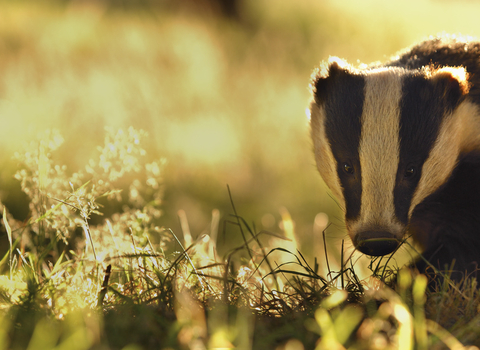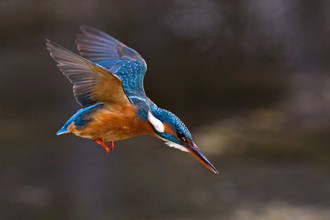Badgers are a valued species in the UK, protected by law.
25% of the European population is found in the UK, so we have an international responsibility to conserve them.
Shropshire Wildlife Trust has opposed the badger cull since it first started and will not allow badger culling its land.
Bovine Tuberculosis is a serious infection of domesticated animals (cattle in particular) and wild animals (including badgers). Incidence of the disease in parts of Great Britain has increased substantially over the last 20 years. It costs the UK millions of pounds every year and Shropshire Wildlife Trust recognises the hardship that it causes to many in the farming community.
But we don’t believe a cull is the answer and are calling on the Government to put biosecurity and vaccination at the centre of efforts to tackle this disease rather than killing wild badgers.
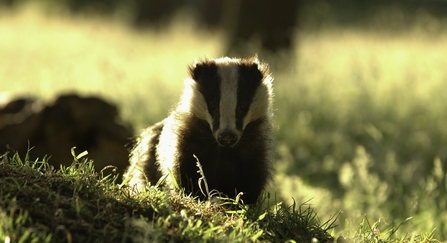
Andrew Parkinson/2020VISION
We are very conscious of the hardship that bovine TB (bTB) causes and the need to find the right mechanisms to control the disease. However, we believe that a badger cull is not the answer. The scientific evidence demonstrates that culling is likely to be ineffective in fighting the disease and, worse still, risks making the problem even worse. We believe the emphasis of all our efforts should be to find a long-term solution and we are calling for the Government to end its policy of culling badgers.
We believe an evidence-based and scientifically reliable approach must be developed to counteract the risk posed to cattle by bTB.
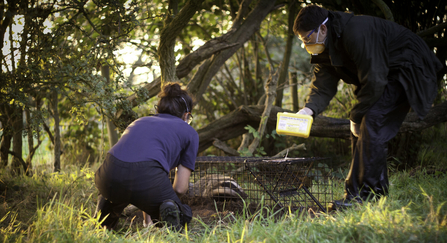
SWT's Helen Trotman vaccinating a badger (c) Tom Marshall
What are we doing?
Shropshire Wildlife Trust has been working on the issue of bTB and its links to badgers for several years. During this time we have:
- Undertaken a vaccination programme (the first in Shropshire) on one of our nature reserves and supplied data annually to Animal and Plant Health Agency (APHA) and Natural England.
- Raised awareness of badger vaccination through numerous local and regional press opportunities, talks and demonstrations..
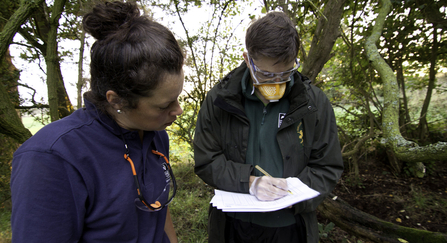
SWT's Helen Trotman checking FERA paperwork (c) Tom Marshall
- Supported other organisations to start their own vaccination programmes.
- Seconded a member of staff to The Wildlife Trusts to lead a project that was funded by Defra. Proposals were developed for overcoming barriers to Badger BCG vaccination deployment and a strategic and co-ordinated approach for deployment was considered.
- Attended workshops in Westminster to shape the Government’s Badger Vaccination fund.

Badger vaccine kit (c) Tom Marshall
- Lobbied the Government to develop a cattle vaccine and implement an all-encompassing badger vaccine strategy.
- Collated, summarised and presented the science on the spread of bTB.
- Hosted two badger forums bringing together scientists, farmers, landowners and vets to share the latest understanding and discuss practical alternatives to culling.
- Encouraged our members and supporters to write to their MPs asking for a different approach to eradicating bTB, without culling badgers.
- Supported and promoted e-petitions to stop the cull
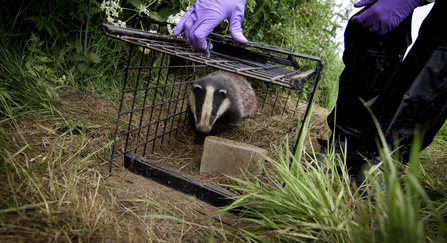
Badger vaccination (c) Tom Marshall
A suite of measures to help tackle bTB
Be an advocate for badgers today and join our call on the Government to abandon its failed culling policy and take immediate action to:
1. Accelerate research into cattle vaccination and improve testing regimes for cattle
Cattle vaccination offers the best long-term way to reduce bTB in the cattle population. The research, testing and trialling of a vaccine has been completed, but it is not yet technically called a vaccine in this country as it has to be accredited. However, accreditation for the European market cannot be progressed whilst an EU ban remains in place on the use of such a vaccine. The ban exists because BCG vaccination of cattle can interfere with the tuberculin skin test which is the recognised primary diagnostic test for TB in cattle. A test called a DIVA test could help resolve this issue as it will enable differentiation of vaccinated-infected from vaccinated-uninfected animals. This test remains to be trialled alongside the vaccine in field trials.
2. Reduce cow-to-cow infections - the major cause of TB infection
The risk of spreading disease when cattle are transported can be minimised by tightening movement controls on cattle even further.
3. Ensure higher standards of biosecurity on farms
Studies indicate bTB transmission may occur via contaminated pasture or around farm buildings but a study by the Food and Environment Research Agency concluded that simple exclusion measures are 100% effective in preventing badgers entering farm buildings when deployed properly. Best practice videos and leaflets are available from Defra. If biosecurity is linked to cross-compliance for subsidy payments on-farm disease transmission should be significantly prevented.
4. Help to roll out badger vaccinations
Badger vaccination has the potential to reduce badger-to-cattle transmission by lowering the prevalence of infection in the badger population. Although vaccination doesn’t cure a badger of bTB it does slow the progression of the disease in an individual animal, and lowers the likelihood that the infection will be passed on. Over time, infected animals should die off, and the prevalence of infection would be expected to decline.
In a clinical trial, the BCG vaccine reduced the risk of vaccinated badgers testing positive to a test of progressed infection by 76%, and reduced the risk of testing positive to any of the available live tests of infection by 54%. In the same clinical trial, BCG vaccination reduced the risk of infection of unvaccinated cubs in a vaccinated social group - when more than a third of the social group was vaccinated, the risk to unvaccinated cubs was reduced by 79%.
Badgers belong in our hedgerows and woods. To help us achieve more for badgers, please consider becoming a member.
More information
What is Bovine Tuberculosis?
Bovine tuberculosis (bTB) is a highly infectious disease of cattle which devastates thousands of farming businesses annually. Since the mid-1980s, the incidence of bTB in cattle has increased substantially creating an economic burden on the taxpayer and the farming industry, as infected cattle must be culled.
Government research shows that TB is not a major cause of death in badgers. Generally, infected badgers do not show any sign of infection and can survive for many years before showing serious symptoms.
This is a cattle problem, not a badger problem
The control of Bovine TB in cattle should be the main focus of everyone’s efforts to control this problem. We recognise badgers play a role in maintaining the disease but evidence shows that they aren’t the primary cause of the spread of TB in cattle: the primary route of infection is via cow-to-cow contact.
Problems with the cull
There is a lack of robust scientific evidence to demonstrate culling badgers reduces TB in cattle. In addition, that it is worth the loss of thousands of badgers and millions of pounds of public spending.
It is also uncertain how humane the killing of badgers is, due to insufficient monitoring.
Culling will not eradicate TB from badgers, whereas vaccination has the potential to, and a higher proportion of badgers left after the cull will have TB.
Badgers are a valued species in the UK, protected by law. 25% of the European population is found in the UK, so we have an international responsibility to conserve them.
Latest news
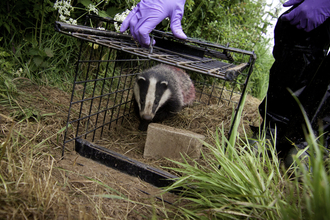
Government approves badger culling to 2026 and ignores public consultation
Today the Government announced that it will continue to issue licenses to kill badgers over the next four years. This will put 130,000…

Government’s plan to phase out badger cull must mean end to cull licences now
The Wildlife Trusts have shared their response to the Government’s consultation on the badger cull and are calling upon the Government…

Latest badger cull announcement
Largest ever badger cull authorised this autumn – bringing the total shot to 35% of UK’s badger population.

